|
Have you ever wanted to start a project but weren’t sure how much yarn you had? Maybe you were using leftovers from your stash, or maybe you were using a mystery yarn or handspun that didn’t even have a label! You COULD wing it and hope for the best, but that’s a great way to lose at yarn chicken. It's always fun when you win, but if you get 90% of the way through a project and realize you don't have enough yarn and can't get more...well, I've been there, and it's a huge disappointment. If you're not sure whether you have enough yarn, the best thing to do is to estimate! Luckily, there are quite a few different techniques available. In this post, I'll show you how to do each one, plus talk about the pros and cons of each. With all these techniques available, there's sure to be one that suits your preferences! Tools NeededFor most of these techniques, you'll need a digital scale and a calculator. The calculator on your phone will work just fine! If you want to dive into some of the other techniques, you'll need a WPI tool, such as the one I sell, a McMorran Yarn Balance, a niddy noddy or warping board (choose what you already have!), and a measuring tape or ruler. It might cost me a few sales, but I'll let you know right now - the WPI method is the least accurate way to estimate your yarn! WPI tools are great for many things, but estimating large quantities of yarn isn't one of them. A Note on Metric and Imperial MeasurementsFor this post, I’m using Jamieson’s Shetland Spindrift. This yarn' weight and length are given in metric measurements, so while I might be discussing yardage, generally, I often give measurements in metric, too. Note that Imperial and Metric systems are NOT interchangeable. Here are a few of the conversions that I reference throughout the video: How to Estimate Yardage If You Have the Ball BandThe most accurate way to estimate your yardage is using the ball band. You're looking for two pieces of information: the weight, and the yardage or meterage. (My example only gives this information in Metric. If yours uses both, pick the one you are most likely to work with,) Then you'll weigh your partially used ball to see how much you have left. Then you'll plug your known quantities into one of the formulas below to determine your remaining yardage. To use the first formula, multiply the original length of the ball of yarn by the remaining weight, and the original weight by X, or the remaining length of yarn. That gets me: 25x = 1034.25 Next, we need to isolate X, so we’ll divide 1034.25 by 25, and our answer is that we have 41.37 meters of yarn left. Another way to calculate this is to divide the length by the weight. 105 meters/25 grams = 4.2 meters per gram. Then I will multiply that by the weight of the yarn I have left: 4.2 meters/gram x 9.85 grams = 41.37 meters of yarn. If I really need to know what that is in yards, I can convert it. 1 meter equals 1.0936 yards. 1.0936 x 41.37 = 45.243 yards Don't Forget to Account for the Weight of Your Cones!Now, a quick tip: If you’re trying to do this kind of calculation for coned yarn, be sure to take into account the weight of the cone. I tend to keep a few empty cones on hand for this purpose. After you’ve weighed your yarn, weigh an empty cone of a similar shape and size. Subtract that weight of the cone from the weight of the yarn you’re trying to determine yardage for. In the example shown in the video, my cone of yarn weighed 58 grams, but the empty cone weighed 24 grams - so I only have 34 grams of yarn! What if You Don't Have the Ball Band?Sometimes, you simply don’t have your yarn label. Labels get lost, it totally happens! Or maybe you're using handspun, and need to estimate your yardage from the get-go. There are still five ways you can estimate your yardage, so don’t worry. They’ll all more or less use one of the formulas we used for the first step, so be sure and keep that handy! Wraps Per Inch MethodThis method has you use the wraps per inch of a yarn, which you then compare to a chart to determine the yards per pound. You then use the same formula that we did earlier to determine how many yards of yarn you have. For this method, you’ll need either a WPI tool or a ruler, plus a scale. Take your wraps per inch without stretching the yarn. Then compare that number to a YPP chart like the one above to get an estimated yards per pound. When I searched for yards per pound charts, I noticed that no two were the same. The most accurate one I found was Interweave's "Master Yarn Chart," which was developed for weavers. This is helpful if you know exactly what your yarn is, but it also points to one of the big failings of this method: there are just so many different kinds of fibers out there, all with different densities. Going back to my Shetland Spindrift example, this technique tells me there are 2600 (or more) yards per pound. The manufacturer's label gives a number that is 2,050 yards per pound, so that's way off! Using the WPI estimate, however, I get 5.1 meters per gram, and 50.23 meters in this ball of yarn. Remember that we calculated 41.37 meters with the manufacturer's information, so that’s a difference of 8.86 meters, or a whopping 21% difference. This is the one method I never use, and it's why I don't sell a WPI tool with the intentions of calculating yardage. They're great for other things, like ensuring consistency in spinning, but they just don't come up to scratch here! Using a McMorran Yarn BalanceThe McMorran Yarn Balance is a tool used by placing your yarn on the hook of the balance. When the balance hangs parallel to the floor, you have the “right” amount of yarn. Then you'll measure the length of yarn in the hook in inches, multiply that number by 100, and get the estimated yards per pound. In Shetland Spindrift example I had 19.5 inches. 19.5 x100 = 1,950 yards per pound. Then I went through the same calculations as before to arrive at an estimated 3.98 meters per gram for the Shetland Spindrift. 3.98 meters/gram x 9.85 grams = 39.2 meters. The estimate was about 2.37 meters LESS than what I originally estimated, or a difference of 4%. This is pretty accurate! One big downside to using the McMorran yarn balance is that you have to cut your yarn, and you often need to snip off lots of little pieces in order to get it to level out. This amount of wasted yarn is a big deal if you only have a little bit of yarn in the first place, or if you're working with an expensive or precious yarn like handspun. If you don't have a McMorran yarn balance and don't want to buy one, you can use these plans to build your own. Using a Niddy Noddy or Warping BoardThe point of this technique is to wind your yarn into a new skein that is easy to measure. You can use a niddy noddy or warping board, but I would recommend against an umbrella swift, since the growing tension of a skein will distort the circumference. The key to this technique is that you know the distance the yarn travels around your tool, and then you count the number of times the yarn went around it. Multiply the length by the number of loops to get the total length of your yarn. In this example, I wound the yarn around a 2-yard niddy noddy. I made 25 revolutions. 2 yards x 25 revolutions = 50 yards (45 meters) This is 3.97 yards/3.63 meters longer or 10% MORE than our original estimate. This number is pretty far off, even though the yarn is being wrapped around a fixed circumference. The reason for that is stretch. Even being careful to not pull it too tight, the yarn did stretch quite a bit. To account for this, be sure to take a measurement of the relaxed skein, after it's been taken off the skeinwinder. (Don't forget to tie your skein ties!) I determined that the total circumference of this skein in the relaxed state was 62 inches, or 1.72 yards 1.72 yards x 25 revolutions = 43.05 yards (39.2 meters) This is 2.17 meters/2.37 yards, or 5% less than our original estimate, and a number I'd be very comfortable working with. Using a Yarn Counter or Yardage MeterRunning your yarn over a yardage counter is pretty straightforward. There are a variety out there, from inexpensive counters designed for fishing line, to this fancy one from the maker of the Electric Eel Spinning Wheel. As with the niddy noddy technique, using a yarn counter risks stretching the yarn and distorting your measurement. To get the most accurate measurement possible, be sure to keep the yarn slack as it runs over the counter - don't pull it tight with your hands. Meters all vary in how they give their readings. Mine gives its reading in tenths of yards. I got a reading of just under 46 meters, or 42 yards. That's only .63 meters, or 2% more than our original estimate, and by far the closest number to the original estimate! While this is very accurate, I'd probably only use it on small-ish amounts of yarn. Unless you have access to industrial, it can become very tedious to measure very large amounts of yarn using this technique. Measuring a Small SampleIf none of the above methods appeal to you, you can always measure out a known quantity of yarn - 10 yards or meters, or even the amount of yarn it takes to knit one row. You'd then weigh that and run it through the original formulas. Since I was using a very accurate scale, I measured out 1 yard of yarn (I wish I'd done a meter instead!), and used the formula from the beginning to estimate that I had 39.15 meters of yarn. This was 2.22 meters, or 6% less than our original estimate. What's the Best Method?Sorry, but I can't choose a winner here! The best method all comes down to your needs, and the equipment you have available to you. Maybe you want the most accurate estimate possible. In that case, I'd highly recommend the ballband or yardage meter method. The WPI method was the least accurate, and I'd steer you away from that one. This chart breaks down the extra tools needed (assuming you have a calculator and a ruler), plus the amount of math needed to perform the calculations. Over the years, I've amassed all the "extra" tools, but if I had to choose just one, it would be a digital scale. When it comes down to it, the two methods I use most often are:
I do use my yardage meter pretty frequently, but I'm more likely to use it to split a skein of yarn into two equal halves (say for sock knitting) than to try to pin down a definite yardage/meterage. Comments are closed.
|
Archives
January 2024
Categories
All
This website uses marketing and tracking technologies. Opting out of this will opt you out of all cookies, except for those needed to run the website. Note that some products may not work as well without tracking cookies. Opt Out of Cookies |
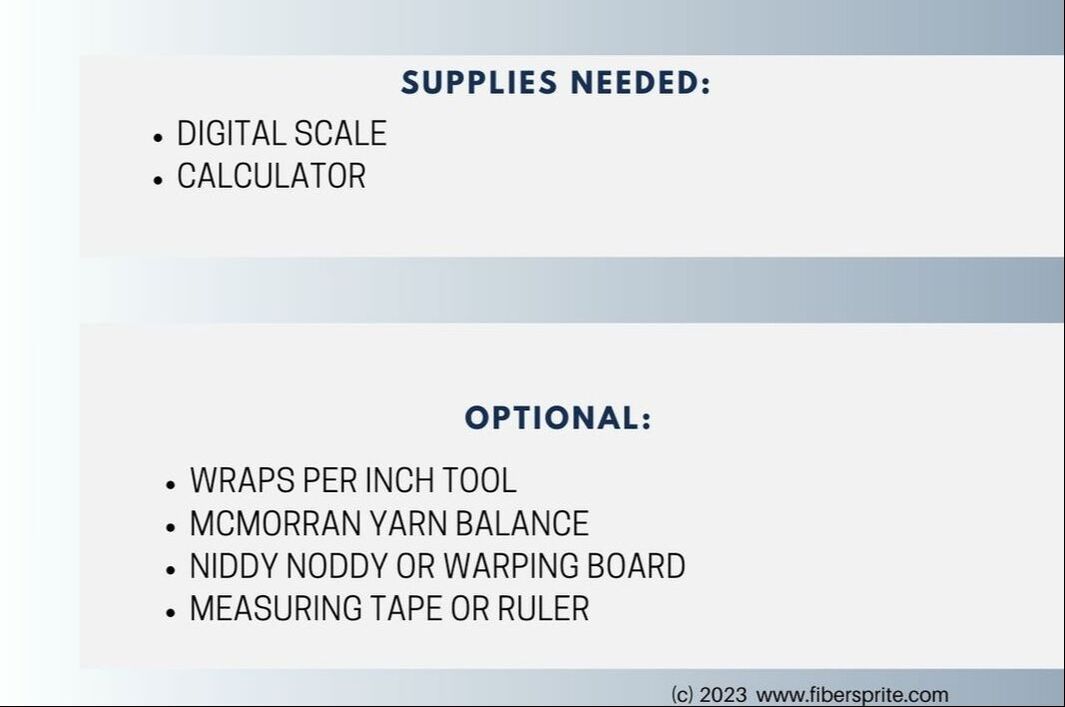
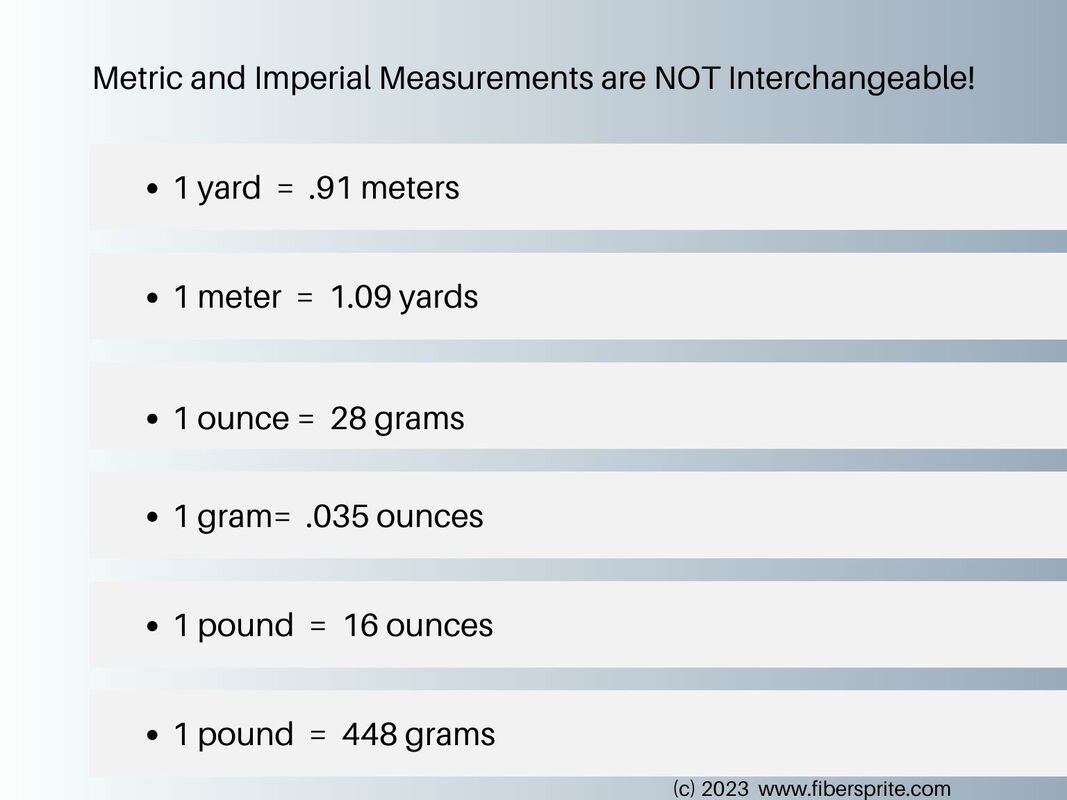
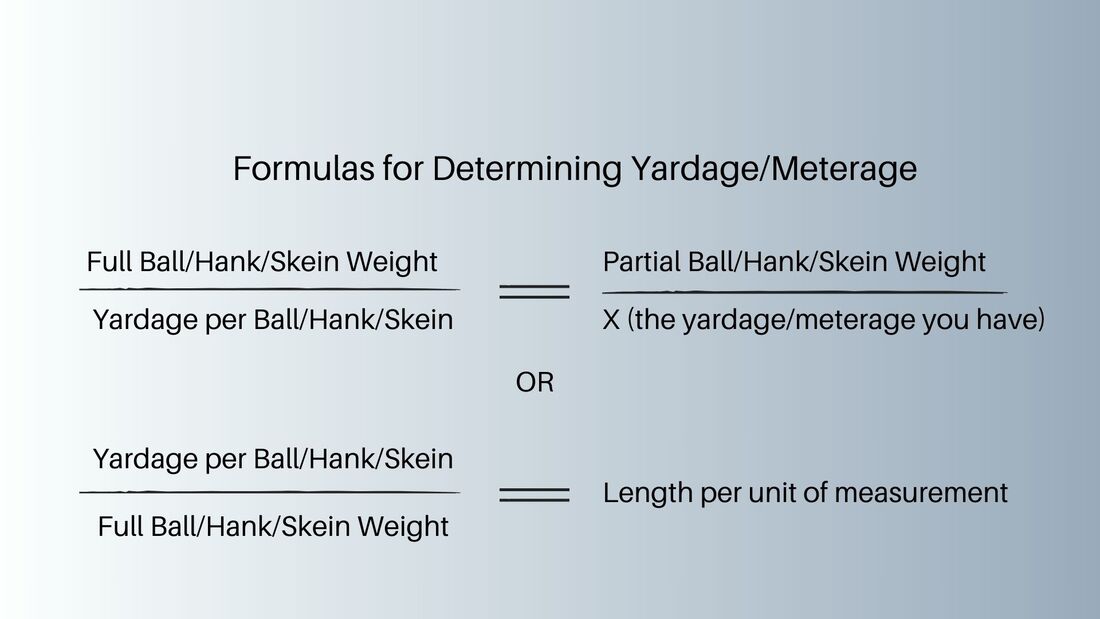
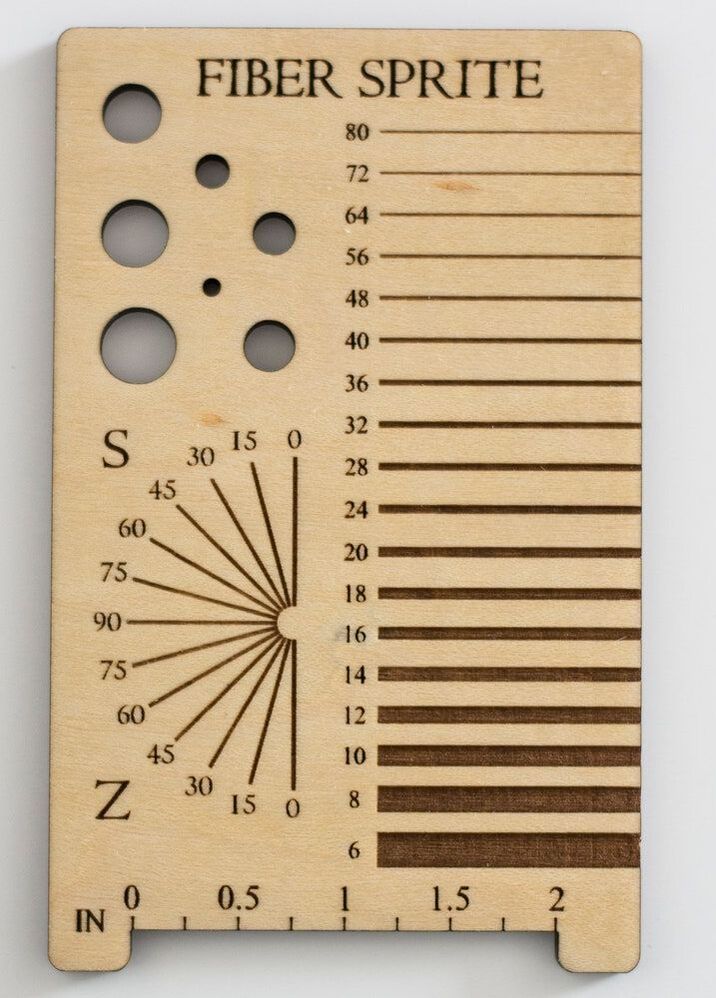
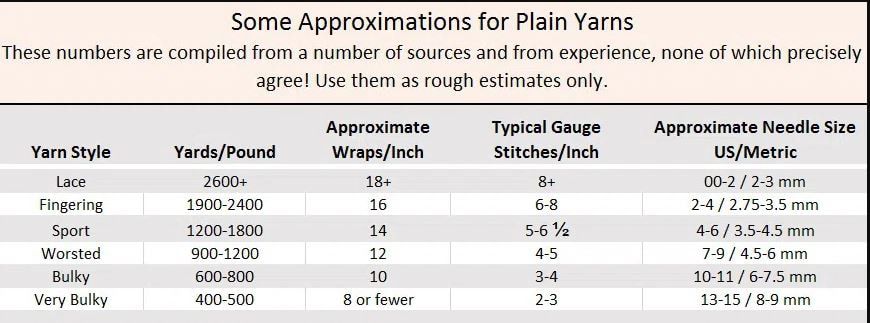
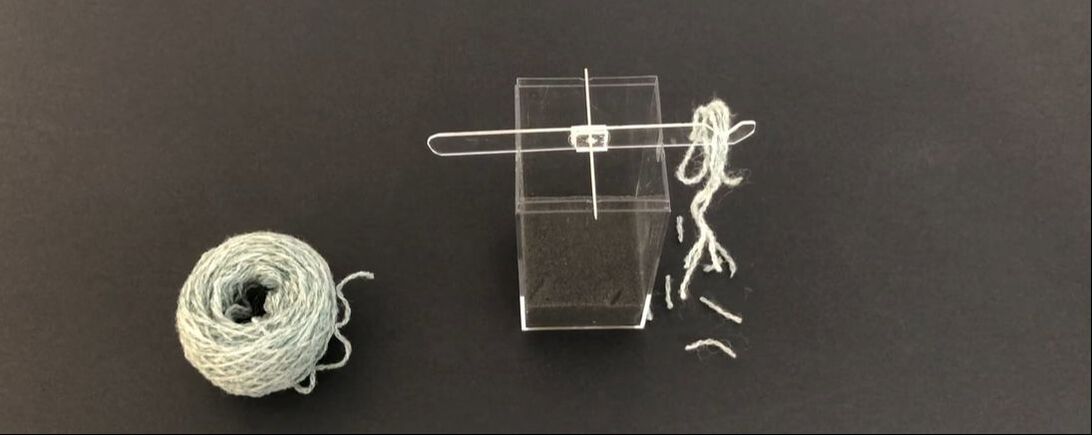
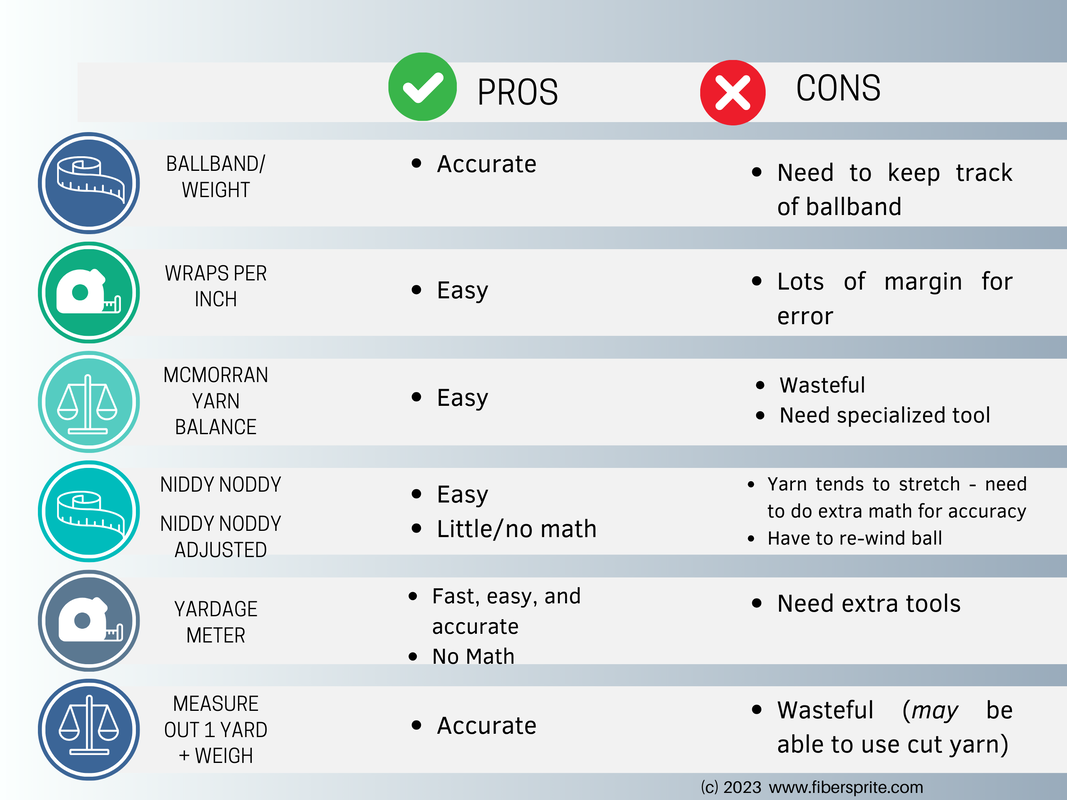
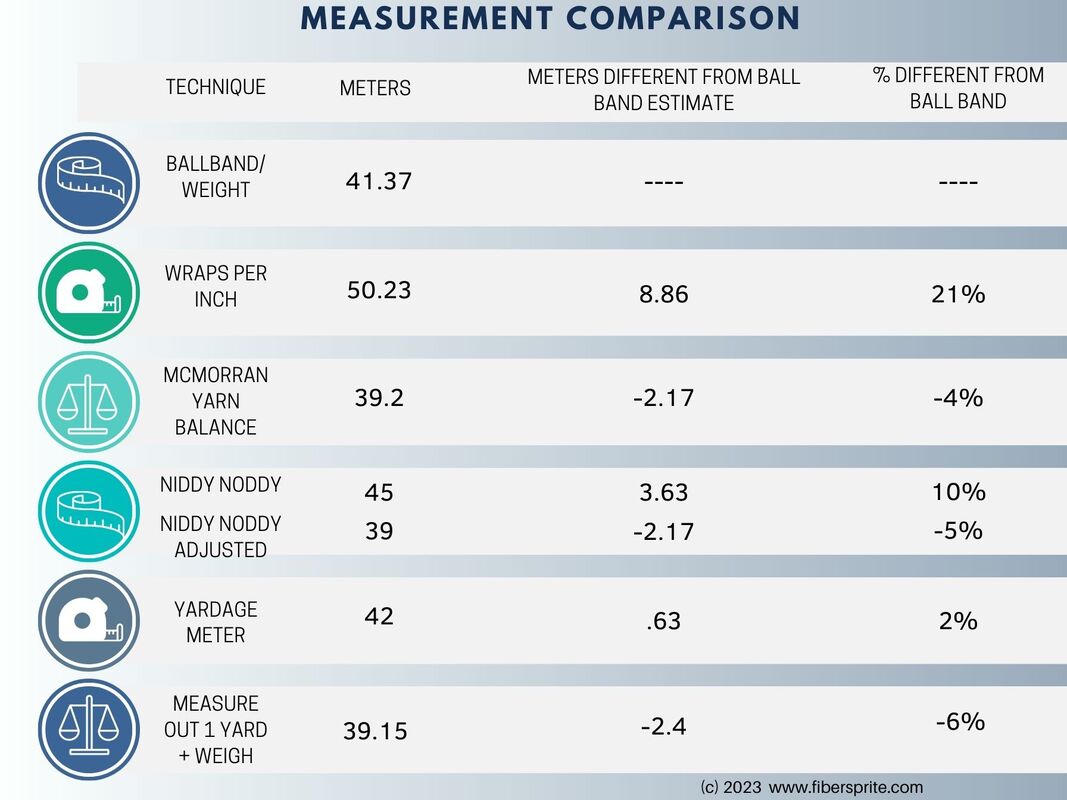
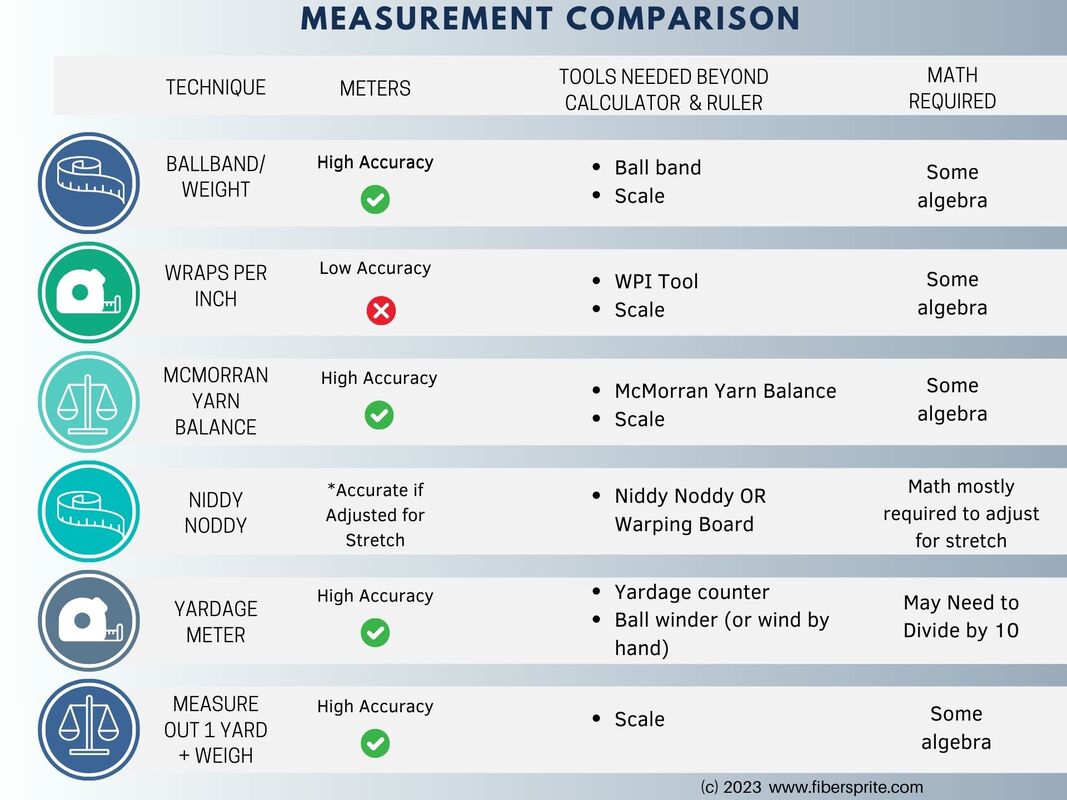
 RSS Feed
RSS Feed